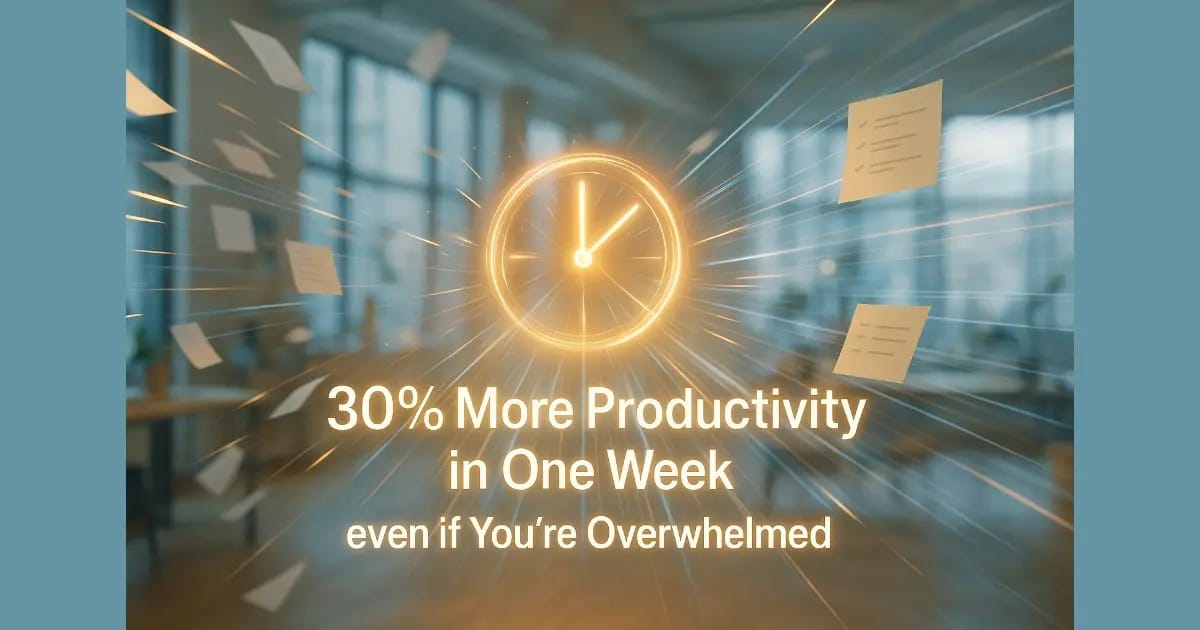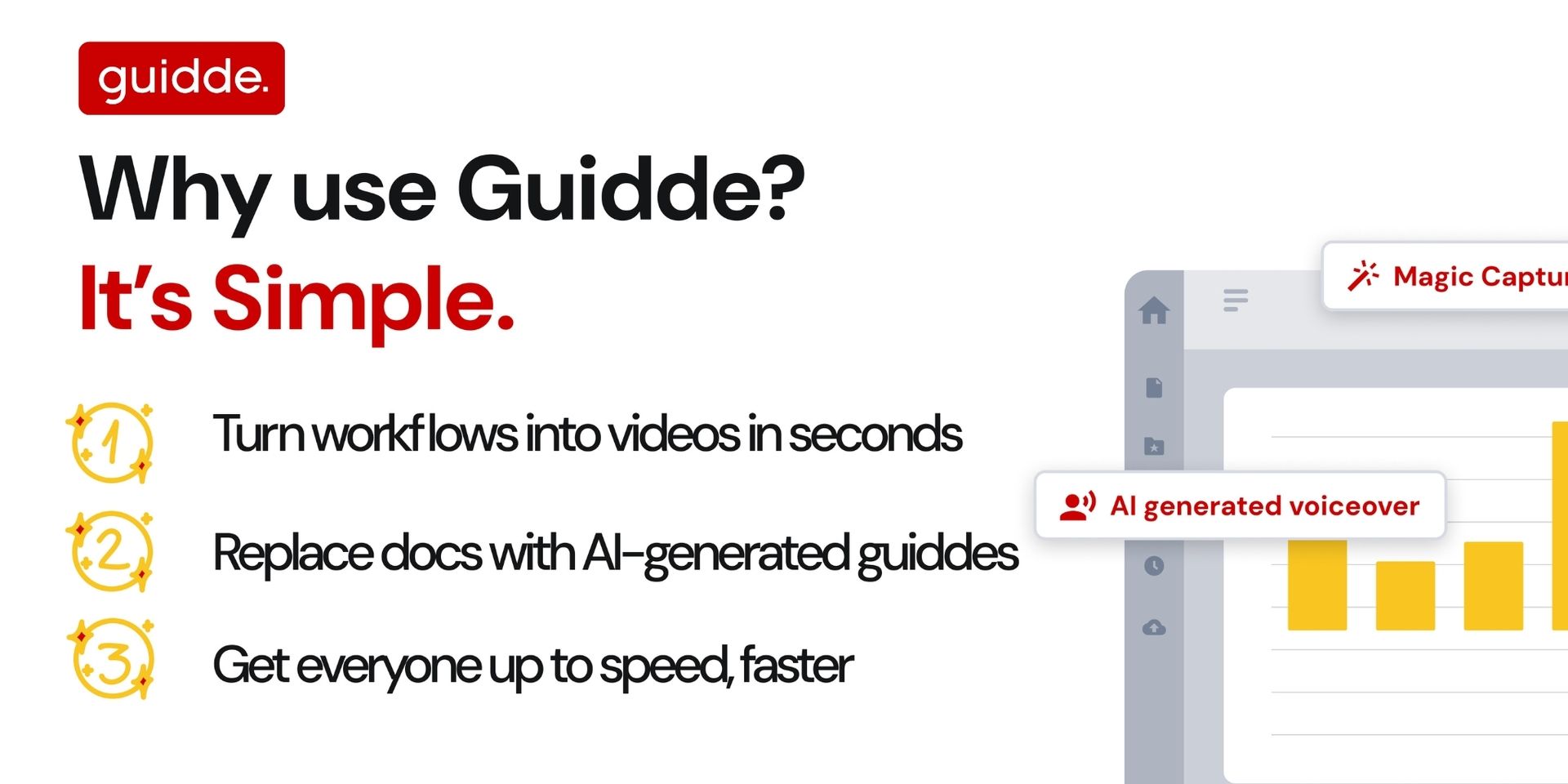- Tech Momentum
- Posts
- 30% More Productivity in One Week even if You’re Overwhelmed
30% More Productivity in One Week even if You’re Overwhelmed
Solopreneurs: discover how to reclaim hours each week and protect your focus with structured time‐management prompts. Learn how to plan, prioritize, and automate your day.

Welcome to Tech Momentum Special Edition!
How to finally control your day without feeling like you’re in a never‑ending race? As a one‑person business, your tasks never end and the line between work and life blurs. Missed deadlines and burnout loom large. Yet, there’s a simpler way. By using proven prompts and templates, you can reclaim hours each week and stay sane.
Read on to get the full template collection.
30% More Productivity in One Week even if You’re Overwhelmed
Why You Should Use Them
Have you ever wondered how to grow your solo business without sacrificing your sanity? Time‑management is the secret weapon. Most solopreneurs waste hours switching between tasks or answering emails instead of focusing on growth. This collection of prompts streamlines planning, prioritization, and execution so you can work smarter, not longer. Let’s dive in and start with the first prompt.
Introducing the first AI-native CRM
Connect your email, and you’ll instantly get a CRM with enriched customer insights and a platform that grows with your business.
With AI at the core, Attio lets you:
Prospect and route leads with research agents
Get real-time insights during customer calls
Build powerful automations for your complex workflows
Join industry leaders like Granola, Taskrabbit, Flatfile and more.
8 Focused Prompts
Time Audit & Elimination Planner
This prompt helps you identify time‑wasters and eliminate low‑value tasks.
Prompt:
Purpose: The purpose of this exercise is to help you audit your weekly schedule, discover where your time goes, and eliminate or automate low‑value tasks so you can focus on growth.
Role: Act as an experienced productivity coach specialized in helping solopreneurs optimise their schedules.
Goal: Analyse the user’s recent [time log], highlight tasks that contribute to revenue or core goals, and flag distractions or busy‑work. Recommend what to delegate, automate, or drop. Keep the tone supportive and concise.
Inputs: The user will provide a [weekly time log], [key business goals], and [preferred tools].
Process:
- Categorise tasks in the time log into revenue‑generating, strategic, administrative, and personal.
- Use the Eisenhower matrix to rank them by importance and urgency.
- Identify at least three tasks that can be automated or delegated.
- Suggest tools (e.g., time trackers, project managers) to automate repetitive actions.
- Propose a simplified weekly schedule focusing on high‑impact activities.
Output: Present findings in a two‑column table: “Keep/Focus” vs “Eliminate/Delegate,” followed by a short paragraph summarising next steps.
Confidence: Ensure the advice feels actionable, realistic, and ready to implement.
Deep‑Work Block Scheduler
This prompt helps you carve out uninterrupted deep‑work sessions.
Prompt:
Purpose: To design focused work blocks that allow you to tackle cognitively demanding tasks without distractions.
Role: Act as a seasoned time‑management consultant for freelancers and solopreneurs.
Goal: Create a weekly schedule of [deep‑work blocks] aligned with the user’s [peak energy times] and [task priorities], incorporating short breaks to maintain energy.
Inputs: [Peak energy hours], [priority tasks], and [preferred working days].
Process:
- Map the user’s peak energy periods and assign high‑complexity tasks to those slots.
- Recommend the Pomodoro or 90‑minute deep‑work method depending on task complexity.
- Insert five‑minute breaks between blocks and a longer break every two hours.
- Suggest using focus apps or website blockers to avoid distractions.
Output: Provide a visual schedule (bullet list or table) showing start and end times for each block, with task types and break durations.
CTA: Encourage the user to commit to their first deep‑work session today.
Confidence: Ensure the schedule feels achievable and motivating.
Priority Matrix Planner
This prompt helps you rank and schedule tasks using the Eisenhower matrix.
Prompt:
Purpose: To help solopreneurs prioritise tasks effectively using urgency and importance criteria so you always work on what matters most.
Role: Act as a productivity strategist with expertise in the Eisenhower matrix.
Goal: Transform a [task list] into four categories (Do First, Schedule, Delegate, Delete) and map them into a weekly plan.
Inputs: A [list of tasks], [deadlines], and [resource availability].
Process:
- Classify each task into one of the four matrix quadrants.
- For “Do First” tasks, assign exact dates and times.
- For “Schedule” tasks, group them into suitable time blocks later in the week.
- For “Delegate,” suggest outsourcing strategies or automation tools.
- For “Delete,” advise on politely declining or dropping tasks.
Output: Present the matrix as a 2×2 table, followed by a list of next steps.
Confidence: Ensure your advice feels clear, empowering, and easy to act on.
Automation Blueprint
This prompt helps you automate repetitive tasks with the right tools.
Prompt:
Purpose: To free up your time by identifying routine tasks and recommending tools or workflows to automate them.
Role: Act as a tech‑savvy automation consultant for small businesses.
Goal: Analyse a list of [repetitive tasks] and suggest automation solutions using apps like Zapier, IFTTT, or built‑in features of project management tools.
Inputs: [Repetitive tasks], [current software stack], [budget], and [desired outcome].
Process:
- For each task, determine if it involves data transfer, notifications, or scheduling.
- Recommend specific tools and briefly outline how to set up each automation.
- Highlight cost‑effective options and note any integration limitations.
- Estimate time saved per week once automation is implemented.
Output: Provide a table with columns: “Task,” “Automation Tool,” “Setup Steps,” and “Estimated Hours Saved.” End with a paragraph summarising the overall impact.
CTA: Invite the user to implement one automation today.
Confidence: Ensure recommendations feel practical and achievable for non‑technical users.
Delegation & Outsourcing Planner
This prompt helps you decide what to delegate and to whom.
Prompt:
Purpose: To help solopreneurs free up time by identifying tasks that can be delegated or outsourced to freelancers or virtual assistants.
Role: Act as a business coach experienced in building support systems for solo entrepreneurs.
Goal: Review the user’s [task list] and [budget], suggest roles to outsource, and provide tips on hiring and briefing remote help.
Inputs: [Current workload], [skills you lack or dislike], [budget], and [desired outcomes].
Process:
- Categorise tasks by skill level and frequency.
- Recommend which tasks to delegate first based on time cost and impact.
- Suggest platforms (e.g., Upwork, Fiverr) or local networks for hiring.
- Provide guidelines for crafting clear briefs and onboarding freelancers.
- Outline follow‑up practices to ensure quality.
Output: Offer a prioritized delegation list with role suggestions, expected costs, and onboarding tips.
Confidence: Ensure the plan feels doable and reduces overwhelm.
Energy Rhythm Mapping
This prompt helps you align work with your natural energy peaks.
Prompt:
Purpose: To map your daily energy levels so you schedule demanding tasks during peaks and lighter work during dips.
Role: Act as a chronobiology‑aware productivity coach.
Goal: Use a [energy tracking log] to identify patterns and suggest an optimized daily routine that matches energy highs and lows.
Inputs: [Energy log over 7 days], [types of tasks], [preferred working hours].
Process:
- Analyze the log to determine when energy, focus, and creativity are highest.
- Assign tasks like strategy, client calls, and admin to appropriate energy zones.
- Incorporate short breaks or walks during low‑energy periods.
- Recommend sleep and self‑care habits that support sustained energy.
Output: Present a daily schedule segmented into energy zones with suggested tasks and self‑care activities.
Confidence: Ensure the plan feels personalised and sustainable.
Self‑Care & Break Scheduler
This prompt helps you avoid burnout by incorporating regular breaks and recovery.
Prompt:
Purpose: To design a balanced schedule that integrates work blocks with restorative breaks and self‑care activities.
Role: Act as a wellness‑focused productivity coach.
Goal: Ensure the user’s [daily schedule] includes micro‑breaks, meal breaks, and physical activity to maintain health and performance.
Inputs: [Work hours], [preferred break activities], [health goals].
Process:
- Based on total work hours, calculate appropriate break intervals (e.g., 5‑minute breaks every 30 minutes or 15‑minute breaks every 90 minutes).
- Suggest energizing break activities like stretching, short walks, or meditation.
- Encourage separation of meal times from screen time.
- Recommend end‑of‑day rituals to transition out of work mode.
Output: Provide a schedule with break times and suggested activities.
Confidence: Ensure the guidance feels supportive and realistic.
Evening Reset & Goal‑Setting Prompt
This prompt helps you plan tomorrow today to hit the ground running.
Prompt:
Purpose: To create a short evening ritual that reviews accomplishments and sets priorities for the next day.
Role: Act as a productivity mentor for solopreneurs.
Goal: Guide the user through reflecting on [today’s tasks], acknowledging wins, and listing the top three priorities for [tomorrow], ensuring a calm finish to the day.
Inputs: [Completed tasks], [pending items], [tomorrow’s appointments], and [personal goals].
Process:
- Prompt the user to list what they accomplished and what could be improved.
- Encourage gratitude for progress made.
- Help them choose three high‑impact tasks for the next day based on deadlines and goals.
- Suggest preparing materials or environment for those tasks (e.g., documents, workspace).
Output: Provide a simple checklist with accomplished tasks, lessons learned, and tomorrow’s top three priorities.
CTA: Invite the user to implement this ritual tonight and share their progress.
Confidence: Ensure the ritual feels quick, calming, and empowering.
Revolutionize Learning with AI-Powered Video Guides
Upgrade your organization training with engaging, interactive video content powered by Guidde.
Here’s what you’ll love about it:
1️⃣ Fast & Simple Creation: AI transforms text into video in moments.
2️⃣ Easily Editable: Update videos as fast as your processes evolve.
3️⃣ Language-Ready: Reach every learner with guides in their native tongue.
Bring your training materials to life.
The best part? The browser extension is 100% free.
Conclusion
You’re now armed with a toolbox to reclaim control of your day. By auditing your time, blocking deep‑work sessions, prioritizing effectively, automating and delegating, syncing tasks with your energy, scheduling breaks, and planning tomorrow tonight, you can free hours for strategic growth. Each prompt empowers you to cut chaos and focus on what matters.
Look in our Promptsection
And check out our Newssection
And if you found this helpful, share it with a friend who could use a ChatGPT power-up – because everyone deserves to master their AI sidekick! 🤖💡
Share this article with a friend!
Thanks for sticking with us to the end!
We'd love to hear your thoughts on today's email!
Your feedback helps us improve our content
⭐⭐⭐Superb
⭐⭐Not bad
⭐ Could've been better
Not subscribed yet? Sign up here and send it to a colleague or friend!
See you in our next edition!
Tom


